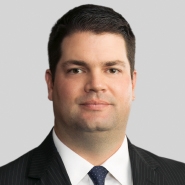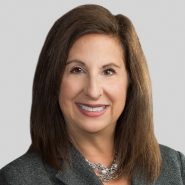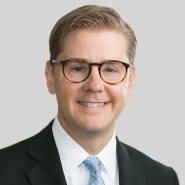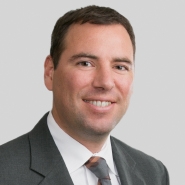Would you like Frye with that? Florida says yes.
On Oct. 15, 2018, the Supreme Court of Florida rejected the Florida Legislature’s adoption of the Daubert standard governing the admissibility of expert testimony in Florida state courts. The 4-3 decision, DeLisle v. Crane Co., restores the Frye rule and has important implications for product liability litigation in Florida.
Background: Daubert versus Frye
In the underlying case, the plaintiff alleged that 16 defendants had caused him to be exposed to asbestos, which led to mesothelioma. He proceeded to trial against three defendants. Like many asbestos cases, the alleged exposure occurred decades ago, resulting in the need for expert witnesses to analyze medical causation attributable to the products and manufacturers at issue. The admissibility of those experts’ opinions became a central issue at trial.
Admissibility was decided according to the Daubert standard, pursuant to the Florida Legislature’s amendment of the Florida Evidence Code, effective in 2015. That amendment incorporated much of the standard set forth in Rule 702 of the Federal Rules of Evidence and affirmed by the Supreme Court of the United States in Daubert v. Merrell Dow Pharmaceuticals, Inc., and two subsequent cases known collectively as the “Daubert trilogy.” Florida’s rule permitted a qualified expert witness to testify if:
- The testimony is based on sufficient facts or data.
- The testimony is the product of reliable principles and methods.
- The witness has applied the principles and methods reliability to the facts of the case.
A majority of states have adopted some degree of the Daubert trilogy by either legislation or judge-made law. But some states – notably, California, and until 2015, Florida – have adhered to the older rule from Frye v. United States. Frye, a criminal case concerning the admissibility of a lie detector test, requires that expert testimony be deduced from generally accepted scientific principles in the particular field. Accordingly, two key differences between Daubert and Frye are the judge’s role and the scope of the standard. In Frye jurisdictions, the judge assesses general acceptance in the scientific community of new or novel scientific techniques. In Daubert jurisdictions, the judge considers the reliability of all expert evidence, whether novel or not.
In DeLisle, after holding Daubert hearings, the trial court admitted each expert’s testimony. After deliberations, the jury awarded $8 million in damages to the plaintiff and apportioned the fault among the three defendants and a non-party. After post-trial motions, the Court entered judgment for the plaintiff. On appeal, the 4th District Court of Appeal applied the same Daubert standard and reversed, finding that the trial court should have excluded certain experts’ testimony. The plaintiff appealed to the Supreme Court.
The Supreme Court’s analysis: A procedural conflict
The first issue for the Court concerned whether the amended evidence rule was substantive or procedural. The Florida Legislature has the power to enact substantive law – that which defines, creates or regulates rights such as life, liberty and property. On the other hand, the Supreme Court has the power to enact procedural law – the method of conducting litigation involving those substantive rights. The Court found that the rule was unquestionably procedural. Moreover, although the Florida Constitution permits the legislature to repeal the Supreme Court’s rules, it must be done by a two-thirds vote of each house of the legislature. The amendment, however, passed the House with a simple majority, but not a two-thirds vote. Therefore, it was improper.
Second, the Court held that the amendment conflicted with the Court’s adoption of Frye, despite that the Court had not addressed the standard for the admissibility of expert testimony in the years since the statute purportedly displaced Frye.
Therefore, the Court held that the expert testimony was properly admitted and should not have been excluded by the appellate court. The Court reasoned that medical causation testimony is not new or novel and is therefore not subject to Frye analysis. The Court remanded to the trial court with instructions to reinstate the judgment.
Three justices dissented, raising the Court’s conflict jurisdiction. The case was a conflict case because the plaintiff did not raise the Frye versus Daubert issue below, meaning the Court did not otherwise have jurisdiction unless there was a conflict. The majority found a conflict despite that the Florida Legislature intended to displace Frye by amending the evidence rule, and despite that the Court had not re-adopted Frye since the amendment. The dissent lamented that the majority “rescue[d]” the plaintiff from the “poor choice” he made in not raising the constitutionality issue before the trial court.
Post-decision filings
Not surprisingly, the defendants highlighted the dissent’s reasoning in their motions for rehearing. They argued that Frye is, and has always been, a common-law doctrine, rather than a procedural rule espoused by the Supreme Court that could have conflicted with the trial court’s application of Daubert. The plaintiff responded that the Supreme Court has the power to adopt procedural rules, such as the Frye rule, via its decisional case law (even though it does so sparingly) rather than via an administrative rulemaking process (the more common method). The Supreme Court denied these motions on Dec. 6, 2018.
What it means
There are several takeaways from DeLisle.
First, Frye is narrow. As the majority acknowledges, it “is inapplicable to the vast majority of cases because it applies only when experts render an opinion that is based upon new or novel scientific techniques.” So, in the “vast majority” of cases, the trial court will have broad discretion to determine the admissibility of expert testimony. Daubert, to the contrary, applies to all expert testimony.
Second, the majority considered amici filings from various interest groups describing the additional time and expense associated with Daubert proceedings, noting its “concern” that the amendment would affect “access to courts.” Justice Pariente, concurring, amplified these concerns. It comes as no surprise then that the plaintiff’s bar generally views DeLisle as beneficial.
It remains to be seen whether the movement toward adoption of Daubert in the 50 states will be stalled or reversed as a result of DeLisle, but what is certain is that the change is an extraordinarily important one for product liability practitioners who find themselves before Florida state courts.
For more information please contact Jason Gerken, Tracey Turnbull, Joyce Edelman, Tony McClure, Javier Pacheco or any member of Weil Brown’s Product Liability Practice Group.







